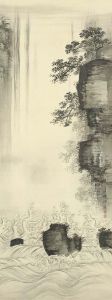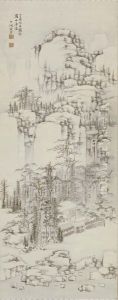Nakabayashi Chikuto Paintings
Nakabayashi Chikuto, also known as Nakabayashi Chikutō, was a Japanese painter, poet, and calligrapher born in 1776, in Nagoya, Aichi Prefecture during the Edo period. His birth name was Nakabayashi Hideaki, but he is more widely known by his art name, Chikutō, or Chikuto. He initially studied under the painter and poet Ooka Shumboku, but he later developed his own style, drawing influence from various Chinese literati painters, including the works of the Yuan and Ming Dynasty artists.
Chikutō was part of the Nanga (literati painting) school, which was characterized by an emphasis on personal expression and a focus on traditional Chinese subjects like landscapes, flowers, and birds. This school was influenced by the scholarly painting traditions of China, and it grew popular among Japanese intellectuals who admired Chinese culture and philosophy, particularly Confucianism and Daoism. Chikutō’s works are noted for their delicate brushwork and use of ink washes, and they often reflect a sense of spontaneity and a deep connection to nature.
Throughout his career, Chikutō was well-respected as a Nanga artist, and he contributed significantly to the development of the school in Japan. He was not only a talented painter but also an accomplished poet, and he integrated his poetic sensibilities into his artwork. Moreover, his calligraphy was highly regarded, and he was known for his ability to infuse his brushwork with a sense of fluidity and elegance that was reminiscent of the Chinese masters he admired.
Chikutō's influence extended beyond his lifetime, affecting the course of Japanese art and inspiring future generations of literati painters. He also took on students, further disseminating his artistic philosophies and techniques. Nakabayashi Chikuto passed away in 1853, leaving behind a legacy marked by a profound mastery of the literati aesthetic and a body of work that continues to be celebrated for its beauty and philosophical depth.



